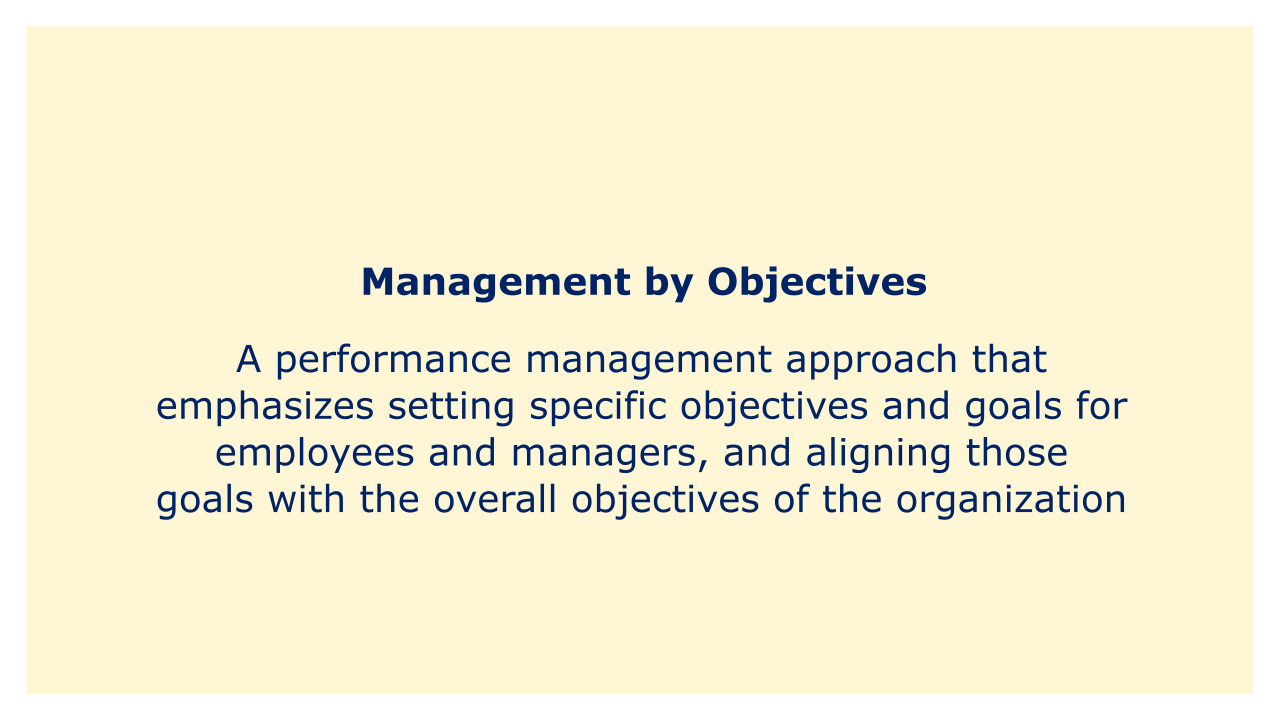 |
| Image: Moneybestpal.com |
Management by Objectives (MBO) is a performance management approach that emphasizes setting specific objectives and goals for employees and managers, and aligning those goals with the overall objectives of the organization.
Setting specific, measurable goals, providing feedback on progress, and modifying goals as needed to attain desired outcomes are all part of this systematic, collaborative approach to managing performance.
Goal-setting, planning, monitoring, and performance evaluation are the four main steps of the MBO process. When setting goals, management, and staff collaborate to create SMART goals—specific, measurable, realistic, relevant, and time-bound—that are consistent with the overall goals of the company. Depending on the degree to which they are accountable for fulfilling the goals of the organization, these goals may be established for certain workers, teams, or departments.
A strategy is created to accomplish the goals once they have been set. This may entail specifying the precise procedures or actions that must be followed, allocating resources, and establishing completion dates. In the monitoring stage, goals are frequently monitored, performance is evaluated, and any necessary plan modifications are made.
Managers and staff members meet to discuss the performance at the performance review stage and to analyze how well the team is doing in terms of achieving the goals that have been set. This could entail looking over key performance indicators, assessing the success of the plan, and pointing out areas that need improvement. The goals or plan may need to be changed in light of this evaluation in order to maintain alignment with the organization's aims.
Due to its emphasis on open communication, teamwork, and the alignment of individual goals with the overarching objectives of the business, MBO is a popular method of performance management in many organizations. MBO makes sure that managers and employees are working toward the same goals and that their efforts are in line with the broader direction of the organization by establishing precise, measurable targets and offering feedback on progress.
Goal-setting, planning, monitoring, and performance evaluation are the four main steps of the MBO process. When setting goals, management, and staff collaborate to create SMART goals—specific, measurable, realistic, relevant, and time-bound—that are consistent with the overall goals of the company. Depending on the degree to which they are accountable for fulfilling the goals of the organization, these goals may be established for certain workers, teams, or departments.
A strategy is created to accomplish the goals once they have been set. This may entail specifying the precise procedures or actions that must be followed, allocating resources, and establishing completion dates. In the monitoring stage, goals are frequently monitored, performance is evaluated, and any necessary plan modifications are made.
Managers and staff members meet to discuss the performance at the performance review stage and to analyze how well the team is doing in terms of achieving the goals that have been set. This could entail looking over key performance indicators, assessing the success of the plan, and pointing out areas that need improvement. The goals or plan may need to be changed in light of this evaluation in order to maintain alignment with the organization's aims.
Due to its emphasis on open communication, teamwork, and the alignment of individual goals with the overarching objectives of the business, MBO is a popular method of performance management in many organizations. MBO makes sure that managers and employees are working toward the same goals and that their efforts are in line with the broader direction of the organization by establishing precise, measurable targets and offering feedback on progress.
